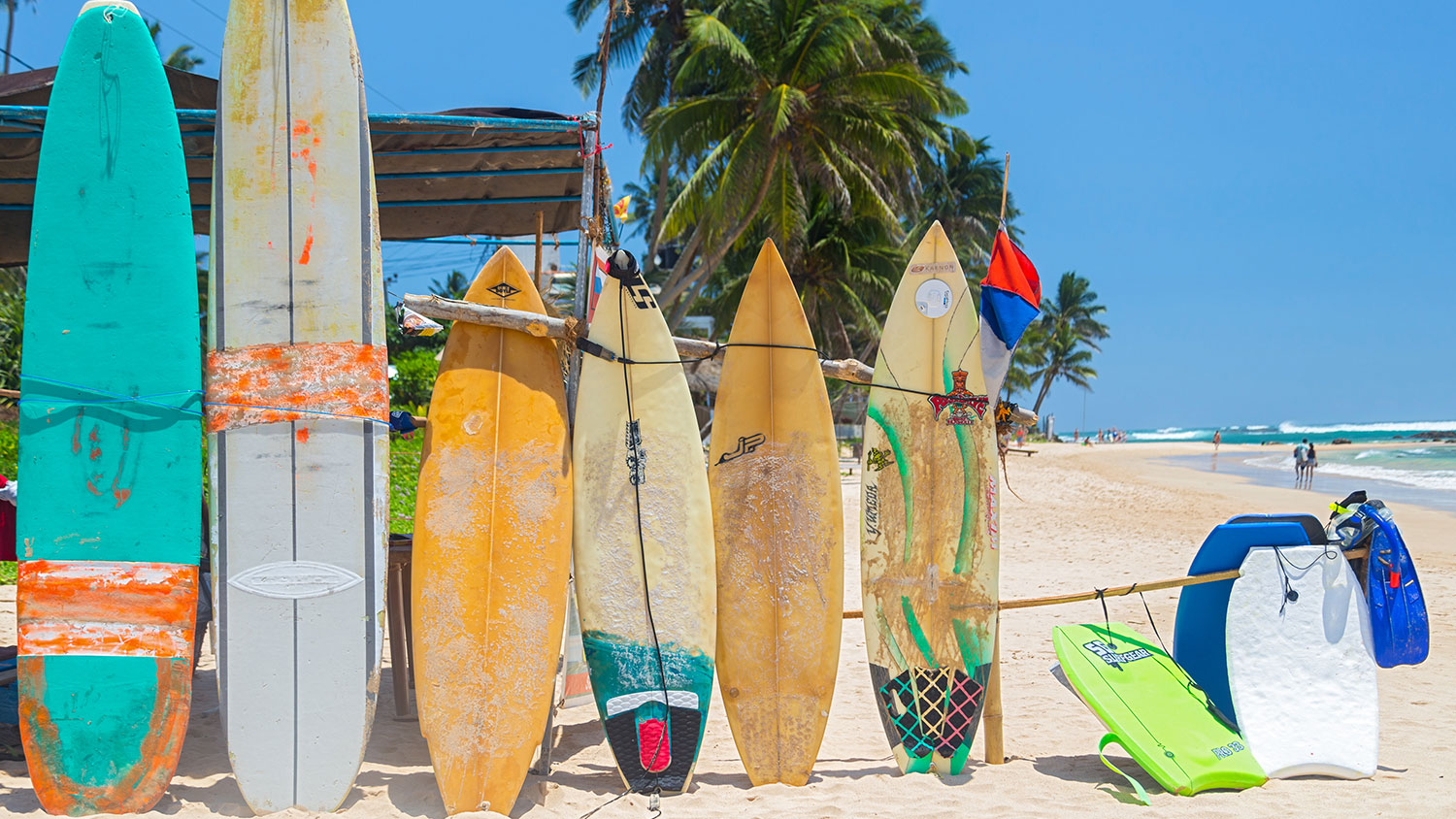Q. Surfing is a beautiful, meditative alignment with the mother ocean. But, it’s also a feast of shaped Styrofoam coated in polymers and neoprene suits. What are the greenest alternatives to the typical gear?
Janet
Valencia, CA
A. Dearest Janet,
Oh, you are a cruel Californian indeed to taunt me with your spiritual ocean journeys in the midst of a cold, rainy Seattle January. The closest I’m getting right now to meditative alignment with the ocean is trying not to step in a puddle when I dare to leave the library stacks.
But you are blessed with a sunny climate, Janet, and there’s no reason you shouldn’t enjoy it out on the water. Even better if the gear you use to do so is as green as possible, right? Regular readers will anticipate I’ll say, “The greenest surfboard is the one you already have,” and there, I said it. Another very green option is a used surfboard, which has already had its impact on the earth (from manufacturing, anyway). That said, however, there are some interesting technologies now in play to create more sustainable, less-toxic surfboards, and it’s also a good thing to support forward-looking companies. So let’s paddle in.
Your garden-variety surfboard has several components: a foam core, called a blank, that’s coated (“glassed,” in surf-speak) in fiberglass and resin for protection, plus a fin. Grab any random surfboard, and chances are that blank is made of polyurethane glassed in polyester resin. Unfortunately, that polyurethane comes from virgin petroleum, and it’s landfill-bound at the end of its life. And that resin? Nasty stuff: It’s carcinogenic and emits high levels of VOCs (volatile organic compounds), posing a risk to the hardworking “shapers” who build the boards.
Luckily, we can do better than that. Some companies now make their surfboards from expanded polystyrene (EPS), which most of us know as that hard-to-recycle, crumbly #6 plastic that cradles our new electronics. Good news: That same stuff can be recycled into surfboards through projects like Waste to Waves, which collects EPS donations and converts them into surfboard blanks (also recyclable, by the way). It’s well worth seeking one out.
More good news: EPS blanks can be glassed in much less toxic resins. A good option is epoxy, a low- or no-VOC resin. (One life cycle analysis found that an EPS-epoxy board creates more carbon emissions than a polyurethane-polyester one, but the former lasts so much longer, it’s basically a wash.)
Still better news: Bio-based epoxy resins can be had. These formulas replace some of the petroleum ingredients with plant-based ones (some are byproducts of the paper and biofuels industries), thereby reducing the board’s overall carbon footprint.
Plastic isn’t the only wave in the ocean, either. Traditionally, surfboards were shaped from wood, and if you’ve got the cash, these remain a viable and earth-friendly (not to mention retro cool) option. Look for boards that tout sustainable harvesting bona fides, such as Forest Stewardship Council certification and/or sourcing close to the shaper. For example, this Maine brand uses local northern white cedar, and this Canadian one taps driftwood and local lumber scrap. And here’s a truly alternative idea: mushroom surfboards. They’re not quite on the market yet, but when they debut, we’ll have a readily renewable, biodegradable foam material fashioned from fungi. I’m setting a Google alert for it now.
In the meantime, keep an eye out for the ECOBOARD label in the surf shop. This third-party certification system from the nonprofit Sustainable Surf gives its stamp of approval to boards made with at least partially recycled or bio-based blanks, bio-based and low-VOC resins, or sustainably sourced wood.
As to the sleek wetsuits you surfers must wear: The water is a bit cloudier on the matter. The classic choice, neoprene, is a petro-derived material, with all its attendant ills. There is another option made from limestone rather than oil, but it has impacts of its own and remains controversial. A new and promising type of neoprene made from a desert shrub hit the market this past summer, so that might be a good choice, Janet. But your current or secondhand wetsuit? Still better.
Finally, while it’s always wise to scrutinize the products we buy, the life cycle analysis I noted above points out the driving to the beach makes up the whale’s share of carbon emissions for any one surf session, far more than board materials. So don’t let your eco-conscience lapse once you’re geared up, and focus on walking, biking, busing, and electric-carpooling down to the breaks. It’s what mother ocean would want.
Stokedly,
Umbra



